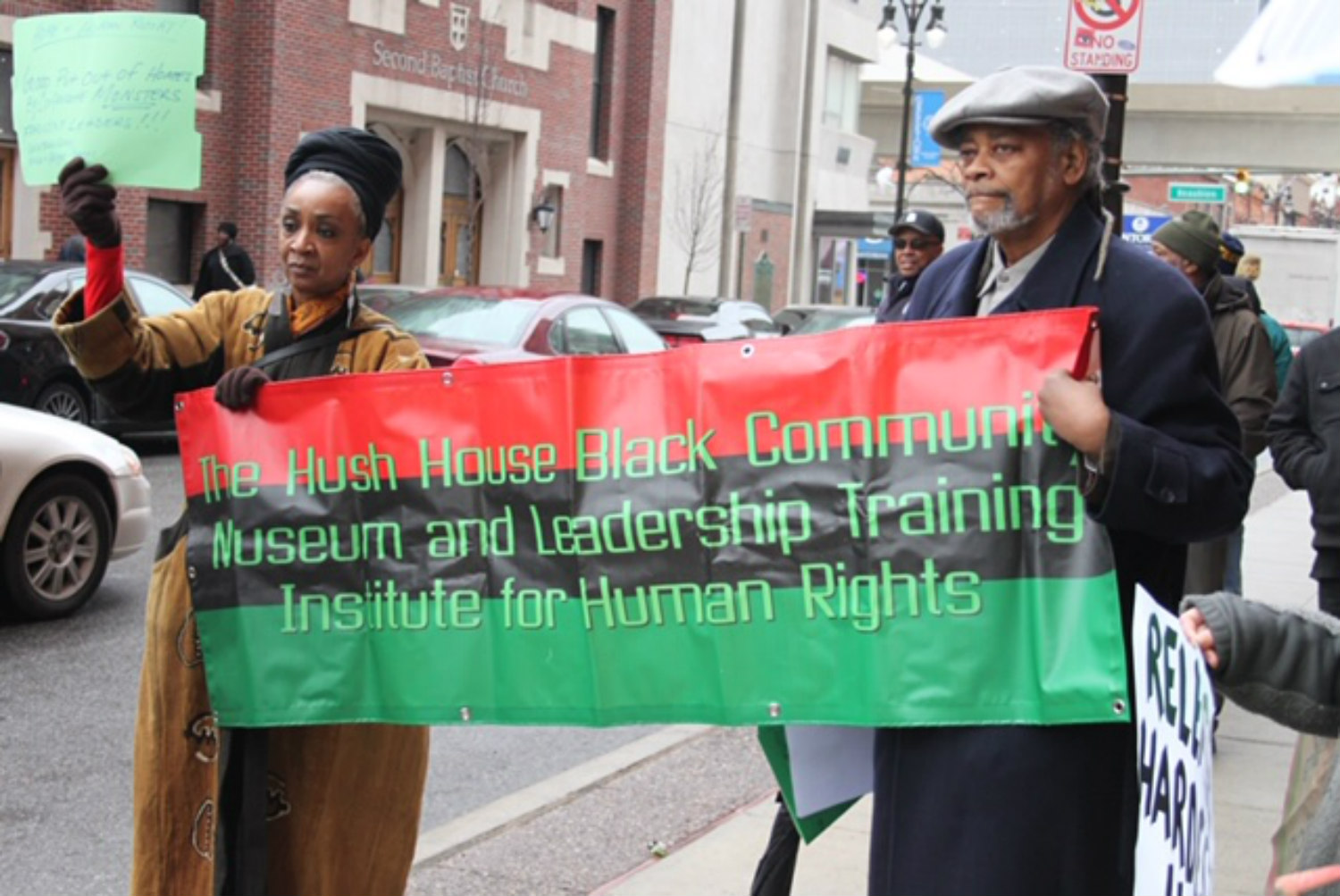First, we wish to give a warm thanks to all of you courageous souls, especially the youth, for standing up to oppose the systemic White supremacist brutality and injustice of the U.S. against Black and Brown, Indigenous and poor peoples everywhere. My wife, Rev. Mama Sandra, and I are honored to have been invited to participate in some way in these historic efforts, and to show our support for your sacrifice and love of humanity.
Before I address the issue of Cynthia Scott’s murder in 1963, I want to remind you of a little Detroit history. In 1793, there was a Fugitive Slave Act that sought the return of Africans who had escaped enslavement. There was some resistance to its enforcement in Northern states. So another law was passed, the Fugitive Slave Act of 1850 (also known as the ‘Bloodhound Bill’). It required any official, including those residing in non-slave states, to assist in the capture and return of any Black person claimed by a slaveholder as their property, under penalty of prosecution. The result was the kidnapping and enslavement of some escaped, but also many free, Black people who were identified by slave catchers, former plantation overseers, and their agents.
In a nation already burdened with slave revolts, you can imagine the firestorm of resistance, especially in the Black communities, but also by reluctant government officials who refused to be forced to support the slave system. Detroit was the scene of much resistance to that law, including the famous rescue of one kidnapped couple from a Detroit jail by armed Black folks, who assisted the couple’s escape to Canada. The police departments carried the same attitudes, values, and the same intent as the plantation overseers: to maintain the oppression of Black folks, with full backing of the legal system.
Jumping forward 110 years to 1963, we young Black Detroiters were outraged by the overt Jim Crow oppression of our parents and grandparents, in the worst and most dangerous jobs in the factories; outraged from observing head whippings, rapes, and insults to Black folk by the police; outraged by poor housing, discrimination in education, and de-facto segregation. We organized to stop brutality.
From the 1940s through the 1960s, there was an infamous white police unit called the Big Four, composed of one uniformed driver and three linebacker-sized, 250 lbs. or more, plainclothes police in a large squad car. They were armed with the regular pistols and billy clubs, but also baseball bats, brass knuckles, truncheons, and an extra knife to put on your person after they assaulted you so they could say they were defending themselves in the rare case they were investigated. They would cruise the Black community looking for an opportunity to whip heads of Black men or women. Regularly, they would stop in front of a pool hall or storefront where young Black men congregated and shout: “Niggers: You better get your black asses off that corner by the time we get back.” Usually, the men would disperse for a while, but sometimes they would be too slow and the cops would jump out of the cruiser and begin swinging the baseball bats, clubs, and pistols. After you were down, they would jump up and down on you, a practice we called ”dancing in your chest,” and give you a pistol-whipping before taking you to one of the local stations or, God forbid, to the 1300 Beaubien Street headquarters, a torture chamber feared by the Black community.
There were no Black people on the City Council to speak up for us. No Black prosecutors; no Black mayors; very few Black policemen— and they had no authority to arrest White citizens. There were a few Black judges. Fortunately, there were a few people’s lawyers such as Milton Henry, George Crockett, and Congressman Charles Diggs Jr., as well as a few State Representatives; but these few leaders had to represent the entire Black community.
I recall vividly the shock of learning about the murder of Cynthia Scott by a white policeman who had a history of brutality against our people. I didn’t know her personally but have a sister who knew her. There was a debate in the community about whether we should support a woman who was accused of being a prostitute, implying that if the deceased had been a so-called “respectable person,” support would have been forthcoming. Our position, within a radical Black youth organization, UHURU, which came into being the same year, was that no Black woman, and no human being, should be murdered, and especially by the police. UHURU had already been protesting racism and police brutality, but not on so large a scale. We had even conducted a sit-in at the local police station on Wayne’s campus. But this murder was so outrageous, that together with another community organization, Group on Advanced Leadership (GOAL), we decided to organize a citywide protest against the police.
We had no cell phones, no Internet, no fax machines. We had something that preceded the Xerox machine on which to make copies in offices at Wayne State U. We had to go door to door, to barber shops, beauty parlors, churches, drive around the community in cars with a loudspeaker, and announce that we were going to protest in front of the most feared and hated Detroit Police headquarters, 1300 Beaubien. To our knowledge, this had not been done before. In 1963, the mere public announcement that we were going to protest at 1300 Beaubien was a revolutionary idea! It was successful in its consciousness-raising within the Black community. There was a major turnout of the Black community, standing tall outside the police station. Our courage grew and our pride and sense of community were growing. A few months later, one or two hundred thousand Black folk marched in Detroit in a demonstration that preceded the March on Washington. Dr. King and Malcolm X spoke in Detroit.
In UHURU we were studying the liberation movements and revolutionary histories around the world, including the revolutions in Russia, China, Korea, and the still-secret War in Vietnam. Youth were active in the Deep South against white racism, and we saw similar conditions in Detroit. We began to make connections between the world revolution and decolonization movements and our own struggles in Detroit and throughout the U.S. Like the abolitionists before us, we expanded our consciousness and critique of the U.S. government, corporations, and capitalism. We began to see that all of the oppression and exploitation we were experiencing had the same source: White supremacy and capitalism. As Dr. King was to point out, we had three monsters to fight: White supremacy, capitalist greed, and militarism. As Minister Malcolm X put it: A capitalist is a bloodsucker…. Stop talking about the South. If you’re south of Canada, you’re South.
Again, we thank you for taking up the mantle of resistance to injustice. We urge you to continue fighting, continue studying the social justice movements around the world, and learning how to build a working unity with all peoples fighting against injustice on behalf of humanity and all living things on this embattled planet. As our brothers and sisters in Mozambique say: A luta continua, the struggle continues!
Rev. Professor Emeritus Baba Charles Simmons and Rev. Mama Sandra Simmons are founders of the Hush House Black Community Museum & Leadership Training Institute for Human Rights in Detroit. They can be heard on the radio show, ‘I Am Detroit’ on WMKM 1440 AM radio, Mondays at noon.


